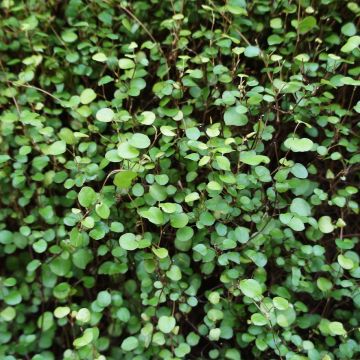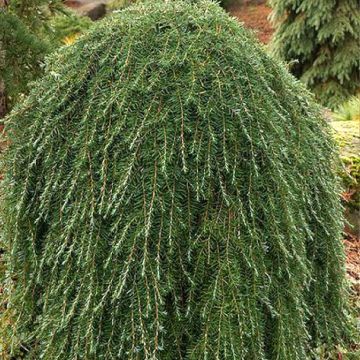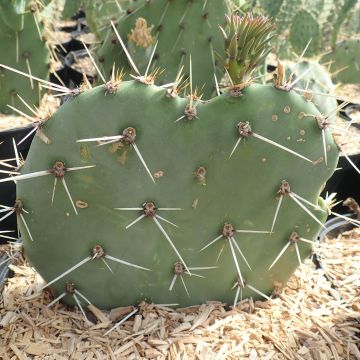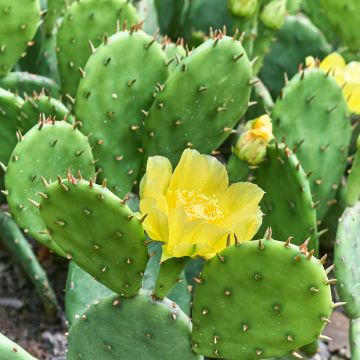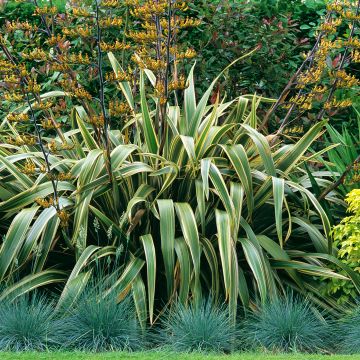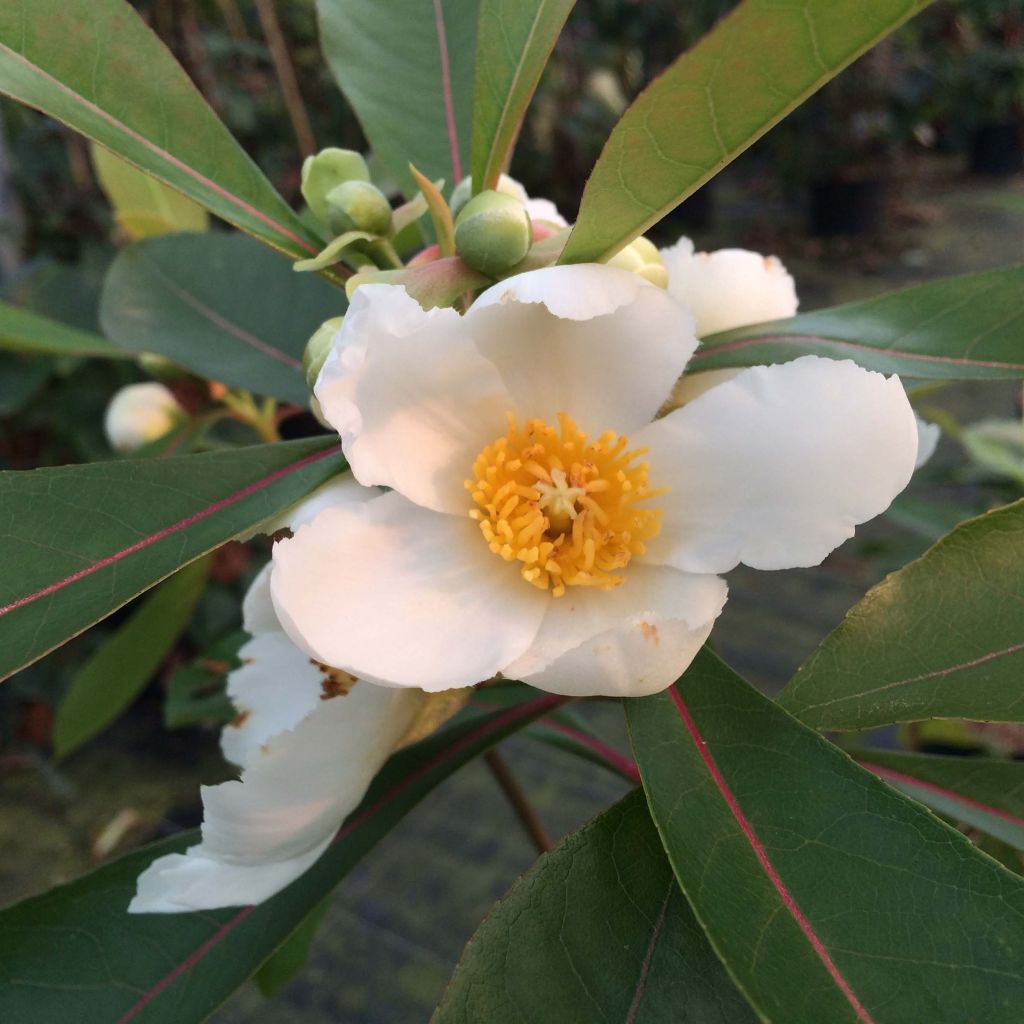

Gordlinia grandiflora
Gordlinia grandiflora
(x) Gordlinia grandiflora
Sweet Tea
Beautiful specimen with attractive foliage. Well rooted and ramified. Planting in association with a Hamamelis Pallida and Magic Carpet Japanese Spireas. Waiting for establishment and the next scented flowering.
Nathalie, 25/03/2021
Special offer!
Receive a €20 voucher for any order over €90 (excluding delivery costs, credit notes, and plastic-free options)!
1- Add your favorite plants to your cart.
2- Once you have reached €90, confirm your order (you can even choose the delivery date!).
3- As soon as your order is shipped, you will receive an email containing your voucher code, valid for 3 months (90 days).
Your voucher is unique and can only be used once, for any order with a minimum value of €20, excluding delivery costs.
Can be combined with other current offers, non-divisible and non-refundable.
Home or relay delivery (depending on size and destination)
Schedule delivery date,
and select date in basket
This plant carries a 24 months recovery warranty
More information
We guarantee the quality of our plants for a full growing cycle, and will replace at our expense any plant that fails to recover under normal climatic and planting conditions.
Would this plant suit my garden?
Set up your Plantfit profile →
Description
The x Gordlinia grandiflora, a charming small tree similar to camellias, combines the qualities of both parents. Franklinia latamaha (Franklin tree) has passed on increased hardiness and beautiful autumn colours, while Gordonia lasianthus is responsible for its more evergreen foliage and the beauty of its large white flowers with yellow hearts, delicately scented. Decorative all year round, this bush with late summer flowering deserves a prominent place in a large heather bed. It requires somewhat delicate care, but it is worth the attention.
The x Gordlinia grandiflora is a small tree from the horticultural family of Theaceae. The tree shows rapid growth and a rather spreading habit, reaching about 3m (9ft 10in) in height and 2m (6ft 7in) in width. The bark is grey with grooves. The foliage is more or less persistent in winter, depending on the climate. It consists of large, narrow leaves, resembling those of rhododendrons, arranged alternately on the branches. They are 12 to 15cm (4.7 to 5.9in) long, oblong in shape, and have a short petiole. Finely toothed at the edges, they are shiny, dark green on the upper side, paler on the underside, and take on reddish and orangish hues in autumn. The flowering occurs after 3 or 4 years of cultivation, once the plant is well established. It takes place between July and September. The pure white flowers with 5 petals, 10 to 12cm (3.9 to 4.7in) wide, adorned with a large heart of yellow stamens, resemble those of a single-flowered camellia. They have a pronounced fragrance, reminiscent of violets. This flowering attracts many butterflies and other pollinating insects.
Gordlinia with its large flowers quickly becomes an attraction in a large heather bed: placed in isolation and in a privileged position, it will amaze many visitors and make the pride of their host who has succeeded in acclimatizing it. Choose its location carefully, preferring a sunny exposure sheltered from dry and cold winds in cooler regions, or partial shade in warmer regions. Capable of withstanding short frosts of around -12°C (10.4 °F), it likes soils that are always slightly moist but not waterlogged, well-drained, sandy, humus-rich, peaty, and acidic, as can be found, for example in western coastal regionbs. To accompany it, choose simple bushes that will not overshadow it, such as dogwoods, a small rhododendron, heathers...
Report an error about the product description
Gordlinia grandiflora in pictures


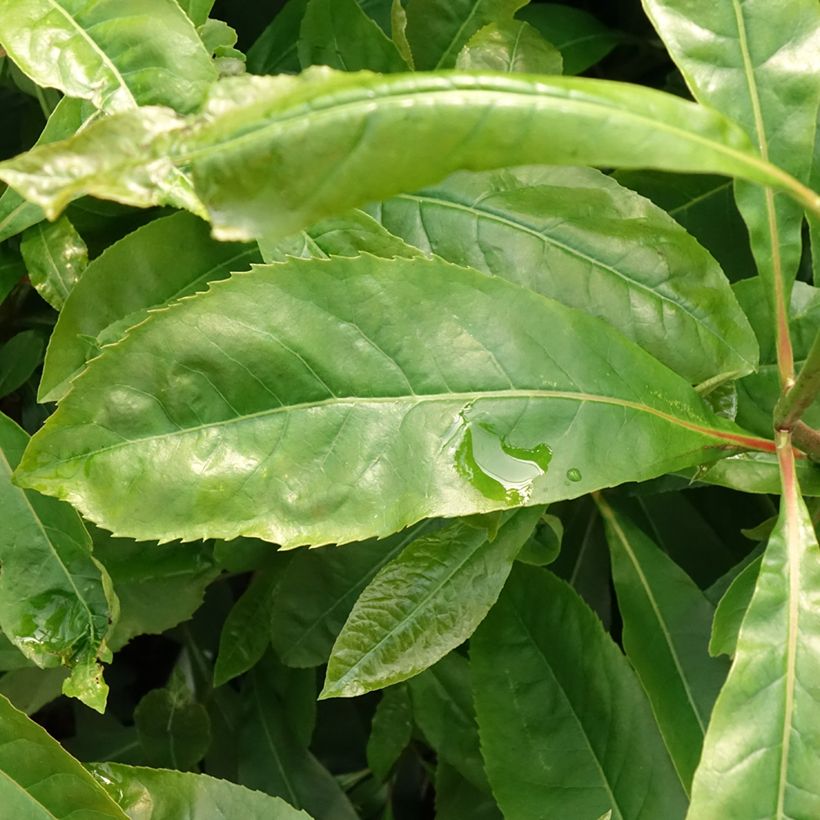

Plant habit
Flowering
Foliage
Botanical data
(x) Gordlinia
grandiflora
Theaceae
Sweet Tea
Cultivar or hybrid
Planting and care
The x Gordlinia grandiflora should be planted in spring after the last frost or in autumn in milder climates. It is recommended to plant bare-root specimens that seem to establish more quickly. Choose a sunny exposure in cooler regions, or partial shade in warmer climates, sheltered from dry and cold winds. The soil should be free of limestone, well-drained, light, rich in humus, and low in clay. It fears both compact and waterlogged soils that are detrimental to its fragile roots, as well as dry soils. Ideally, it should be planted in a naturally sandy and humus-rich soil.
However, it is possible to acclimatize the Gordlinia by improving the soil in your garden: dig a deep hole, replace the soil with an equal mixture of leaf compost, coarse sand, peat, and garden soil. Water regularly with non-limestone water during the first two or three years to promote the plant's establishment, as well as during abnormally dry and hot weather.
Planting period
Intended location
Care
-
, onOrder confirmed
Reply from on Promesse de fleurs
Similar products
Haven't found what you were looking for?
Hardiness is the lowest winter temperature a plant can endure without suffering serious damage or even dying. However, hardiness is affected by location (a sheltered area, such as a patio), protection (winter cover) and soil type (hardiness is improved by well-drained soil).

Photo Sharing Terms & Conditions
In order to encourage gardeners to interact and share their experiences, Promesse de fleurs offers various media enabling content to be uploaded onto its Site - in particular via the ‘Photo sharing’ module.
The User agrees to refrain from:
- Posting any content that is illegal, prejudicial, insulting, racist, inciteful to hatred, revisionist, contrary to public decency, that infringes on privacy or on the privacy rights of third parties, in particular the publicity rights of persons and goods, intellectual property rights, or the right to privacy.
- Submitting content on behalf of a third party;
- Impersonate the identity of a third party and/or publish any personal information about a third party;
In general, the User undertakes to refrain from any unethical behaviour.
All Content (in particular text, comments, files, images, photos, videos, creative works, etc.), which may be subject to property or intellectual property rights, image or other private rights, shall remain the property of the User, subject to the limited rights granted by the terms of the licence granted by Promesse de fleurs as stated below. Users are at liberty to publish or not to publish such Content on the Site, notably via the ‘Photo Sharing’ facility, and accept that this Content shall be made public and freely accessible, notably on the Internet.
Users further acknowledge, undertake to have ,and guarantee that they hold all necessary rights and permissions to publish such material on the Site, in particular with regard to the legislation in force pertaining to any privacy, property, intellectual property, image, or contractual rights, or rights of any other nature. By publishing such Content on the Site, Users acknowledge accepting full liability as publishers of the Content within the meaning of the law, and grant Promesse de fleurs, free of charge, an inclusive, worldwide licence for the said Content for the entire duration of its publication, including all reproduction, representation, up/downloading, displaying, performing, transmission, and storage rights.
Users also grant permission for their name to be linked to the Content and accept that this link may not always be made available.
By engaging in posting material, Users consent to their Content becoming automatically accessible on the Internet, in particular on other sites and/or blogs and/or web pages of the Promesse de fleurs site, including in particular social pages and the Promesse de fleurs catalogue.
Users may secure the removal of entrusted content free of charge by issuing a simple request via our contact form.
The flowering period indicated on our website applies to countries and regions located in USDA zone 8 (France, the United Kingdom, Ireland, the Netherlands, etc.)
It will vary according to where you live:
- In zones 9 to 10 (Italy, Spain, Greece, etc.), flowering will occur about 2 to 4 weeks earlier.
- In zones 6 to 7 (Germany, Poland, Slovenia, and lower mountainous regions), flowering will be delayed by 2 to 3 weeks.
- In zone 5 (Central Europe, Scandinavia), blooming will be delayed by 3 to 5 weeks.
In temperate climates, pruning of spring-flowering shrubs (forsythia, spireas, etc.) should be done just after flowering.
Pruning of summer-flowering shrubs (Indian Lilac, Perovskia, etc.) can be done in winter or spring.
In cold regions as well as with frost-sensitive plants, avoid pruning too early when severe frosts may still occur.
The planting period indicated on our website applies to countries and regions located in USDA zone 8 (France, United Kingdom, Ireland, Netherlands).
It will vary according to where you live:
- In Mediterranean zones (Marseille, Madrid, Milan, etc.), autumn and winter are the best planting periods.
- In continental zones (Strasbourg, Munich, Vienna, etc.), delay planting by 2 to 3 weeks in spring and bring it forward by 2 to 4 weeks in autumn.
- In mountainous regions (the Alps, Pyrenees, Carpathians, etc.), it is best to plant in late spring (May-June) or late summer (August-September).
The harvesting period indicated on our website applies to countries and regions in USDA zone 8 (France, England, Ireland, the Netherlands).
In colder areas (Scandinavia, Poland, Austria...) fruit and vegetable harvests are likely to be delayed by 3-4 weeks.
In warmer areas (Italy, Spain, Greece, etc.), harvesting will probably take place earlier, depending on weather conditions.
The sowing periods indicated on our website apply to countries and regions within USDA Zone 8 (France, UK, Ireland, Netherlands).
In colder areas (Scandinavia, Poland, Austria...), delay any outdoor sowing by 3-4 weeks, or sow under glass.
In warmer climes (Italy, Spain, Greece, etc.), bring outdoor sowing forward by a few weeks.


































